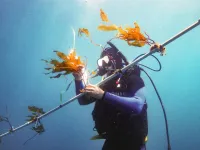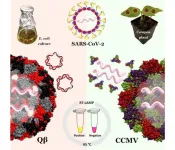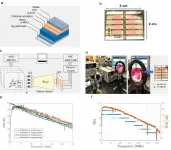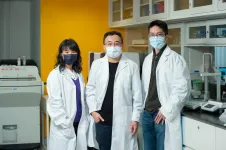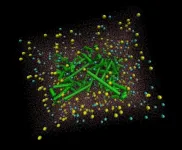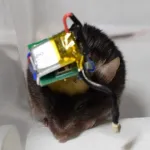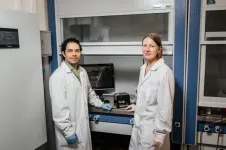INFORMATION:
Dictionary
Apparent magnitude is a conventional unit of star brightness introduced by Ptolemy in the 2nd century AD. The brightest stars are objects of the first magnitude, the faintest visible to the naked eye are of the sixth magnitude. Polaris, for example, is the object of second magnitude.
The astronomical unit (a.u.) is a conventional measure of distance used in astronomy, the average distance between Earth and the Sun. It is 149 597 870.7 km. The Moon is 0.026 a.u. away from Earth and Jupiter is 5.2 a.u. away from the Sun. The astronomical unit is often used to describe planetary systems.
The light year is the distance that light travels in vacuum during one year. It is another conventional measure of (large) distances in astronomy. It is 9.5 trillion km (63,241 AU). This unit is often used to characterise the distances of stars in the Galaxy. The Moon is at a distance of 1.3 light seconds away from Earth. The nearest star, Proxima Centauri - 4.22 light years away.
Jupiter mass is the conventional unit of mass readily used to describe planets. It is approximately 1.9 1027 kg. The mass of Jupiter is 318 times greater than the mass of Earth. For comparison, the mass of the Sun is 1047 Jupiter masses.
Three elder sisters of the Sun with planets
Elder suns with low-mass companions
2021-03-02
(Press-News.org) An international team led by Prof. dr habil. Andrzej Niedzielski, an astronomer from the Nicolaus Copernicus University in Torun (Poland), has discovered yet another three extrasolar planets. These planets revolve around the stars that can be called elder sisters of our Sun.
You can read about the astronomers' success in Astronomy and Astrophysics. The prestigious European journal will publish the paper: Tracking Advanced Planetary Systems (TAPAS) with HARPS-N. VII. Elder suns with low-mass companions. Apart from Prof. Andrzej Niedzielski from the NCU Institute of Astronomy, the team which worked on the discovery includes Prof. dr habil. Gracjan Maciejewski, also from the NCU Faculty of Physics, Astronomy and Informatics, Prof. Aleksander Wolszczan (Pennsylvania State University), dr Eva Villaver (University of Madrid) as well as dr Monika Adamów and dr Kacper Kowalik (both from the University of Illinois).
Discoverers of planets
Prof. Niedzielski's team have been working on this subject for years. Thanks to precise observations of the sky, they have managed to discover 26 stars around which planets revolve. These are usually planetary systems much older than ours. Their suns are mostly red giants. An exception is the Solaris system and the Pirx, a star similar to the Sun (although slightly less massive and cooler) and its planet, discovered in 2009.
- The red giant is a star that has burnt out hydrogen in its interior as a result of nuclear reactions and is rebuilding its internal structure to ignite helium burning nuclear reactions - explains Prof. Niedzielski, - Such a star shrinks in its central part, where the temperature starts to rise. Its outer areas expand significantly and cool down. Initially a yellow star, like the Sun, becomes red and huge. Hence the name of this type of stars. These stars can reach a size comparable to that of Earth's orbit.
Sisters of the Sun
The astronomers looked at 122 stars. They carried out their observations using the Hobby-Eberly Telescope (HET) at the McDonald Observatory, near Fort Davis, Texas, and the Italian National Galileo Telescope, which is located on the island of La Palma (Canary Islands) in Spain. They succeeded in discovering other extrasolar planets orbiting the stars which could be called the big sisters of our Sun.
- These stars are red giants. They have masses exactly the same as our star, but they are a few billion years older, much bigger and cooler - explains Prof. Niedzielski, - The planets that we have discovered are gas giants - without surfaces, similar to our Jupiter. They orbit far too close to their stars for conditions favourable for the origin of life to occur on them or in their vicinity
Eldest sister: HD 4760
The star HD 4760 is an eighth magnitude object in Pisces constellation. It is 40 times larger and emits 850 times more light than the Sun, but because of its distance (about 1781 light years away from us) it is invisible to the naked eye, but it is already within reach of even small and amateur telescopes.
-A planet about 14 times more massive than Jupiter revolves around it. It is in an orbit similar in size to that of Earth around the Sun, at a distance of about 1.1 astronomical units. A year on this planet lasts 434 days - says Prof. Niedzielski.
The observations of the star that led to the discovery of the planet took 9 years. They were conducted first with the Hobby-Eberly telescope and the HRS spectrograph, then with the Galileo telescope and the Harps-N.
- The observations were so long because in the case of the search for planets near red giants it is necessary to study several periods of rotation of the star, which can reach hundreds of days - explains the astronomer from Toru?, - The researchers must make sure that a planet is actually observed, and not a spot on the star's surface that pretends to be a planet.
Younger sisters: TYC 0434-04538-1 and HD 96992
The astronomers have recently discovered a planet orbiting the TYC 0434-04538-1, a star about 2032light-years away from us, in the Serpens constellation. Although it shines almost 50 times more strongly than the Sun, it is also invisible to the naked eye. The reason is again the great distance - to see this object of tenth apparent magnitude, you already need a small telescope. This star is ten times bigger than the Sun, and it is surrounded by a planet six times more massive than Jupiter.
- Interestingly, this planet orbits quite close to its star, at a distance of 0.66 astronomical units. In our Solar System it would be located between the orbits of Venus and Earth - explains Prof. Niedzielski, - A year on this gas planet lasts only 193 days.
Observations of this star with both telescopes lasted 10 years.
The third of the Sun's elder sisters, the HD 96992, is closest to us - "only" 1305 light years away. It is a star of the ninth magnitude in the Great Bear.
- This star, seven times bigger and almost 30 times more energetic than the Sun, has a planet with a mass only slightly bigger than that of Jupiter, in an orbit of 1.24 astronomical units. A year on this planet lasts 514 days, says Prof. Niedzielski.
This star has been observed with the use of two telescopes by astronomers for the longest time - 14 years.
ELSE PRESS RELEASES FROM THIS DATE:
USC study shows promising potential for marine biofuel
2021-03-02
For several years now, the biofuels that power cars, jet airplanes, ships and big trucks have come primarily from corn and other mass-produced farm crops. Researchers at USC, though, have looked to the ocean for what could be an even better biofuel crop: seaweed.
Scientists at the USC Wrigley Institute for Environmental Studies on Santa Catalina Island, working with private industry, report that a new aquaculture technique on the California coast dramatically increases kelp growth, yielding four times more biomass than natural processes. The technique employs a contraption called the "kelp elevator" ...
UNESCO reveals largest carbon stores found in Australian World Heritage Sites
2021-03-02
Australia's marine World Heritage Sites are among the world's largest stores of carbon dioxide according to a new report from the United Nations, co-authored by an ECU marine science expert.
The UNESCO report found Australia's six marine World Heritage Sites hold 40 per cent of the estimated 5 billion tons of carbon dioxide stored in mangrove, seagrass and tidal marsh ecosystems within UNESCO sites.
The report quantifies the enormous amounts of so-called blue carbon absorbed and stored by those ecosystems across the world's 50 UNESCO marine World Heritage Sites.
Despite covering less ...
Coronavirus-like particles could ensure reliability of simpler, faster COVID-19 tests
2021-03-02
Rapid COVID-19 tests are on the rise to deliver results faster to more people, and scientists need an easy, foolproof way to know that these tests work correctly and the results can be trusted. Nanoparticles that pass detection as the novel coronavirus could be just the ticket.
Such coronavirus-like nanoparticles, developed by nanoengineers at the University of California San Diego, would serve as something called a positive control for COVID-19 tests. Positive controls are samples that always test positive. They are run and analyzed right alongside patient samples to verify that COVID-19 tests are working consistently and as intended.
The positive controls developed at UC San Diego offer several advantages over the ones currently used in COVID-19 testing: ...
Plastic solar cells combine high-speed optical communication with indoor energy harvesting
2021-03-02
Around the world there are currently more than 18 billion internet-connected mobile devices. In the next 10 years, anticipated growth in the Internet of Things (IoT) and in machine-type communication in general, will lead to a world of hundreds of billions of data-connected objects. Such growth poses two very challenging problems:
How can we securely connect so many wireless devices to the Internet when the radio-frequency bandwidth has already become very scarce?
How can all these devices be powered?
Regular, manual charging of all mobile Internet-connected devices will not be feasible, and connection to ...
HKBU develops dual-targeting drug for EBV-related cancers
2021-03-02
A Hong Kong Baptist University-led (HKBU) research team has developed a novel drug which has the potential to become a next-generation treatment for cancers associated with Epstein-Barr virus (EBV).
The peptide-linked drug, which is responsive to the acidic environment found in tumours, is the first known agent to have successfully targeted two viral proteins that are simultaneously produced by EBV. It also offers a new strategy by increasing the uptake of anti-cancer drugs in tumour cells, thus allowing the application of lower drug dosages which helps reduce treatment side effects and health risks.
The research results were published in the international academic journal Advanced Science.
New drug targets ...
Scientists develop elements for the future electronics
2021-03-02
Modern electronics is approaching the limit of its capabilities, which are determined by the fundamental laws of physics. Therefore, the use of classical materials, for example, silicon, is no longer able to meet the requirements for energy efficiency of the devices. Currently, it is necessary to start searching for new materials, new principles of electronic devices' functioning. To solve this problem, researchers of Peter the Great St.Petersburg Polytechnic University (SPbPU) are developing thin films, the elements for biomolecular electronics. Scientists believe that biological macromolecules such as nucleic acids, proteins, amino acids can become a promising material for modern ...
'A Bluetooth mouse'--you can wirelessly read a mouse's mind
2021-03-02
Overview:
A research team at the Department of Electrical and Electronic Information Engineering, Department of Computer Science and Engineering, Department of Applied Chemistry and Life Science, and the Electronics-Inspired Interdisciplinary Research Institute (EIIRIS) at Toyohashi University of Technology has developed a lightweight, compact, Bluetooth-low-energy-based wireless neuronal recording system for use in mice. The wireless system weighs END ...
Desert beetle: a help for the drying planet
2021-03-02
A number of scientists whose work is inspired by natural behavior is constantly growing. The lotus flower, with its ability to self- clean, is commonly described in literature and can be best examples the trend. Researchers started to wonder why the flower behaves in this manner and they decided to study its structure with the use of microscopes. Hence, they could draw the conclusion that the structure is highly hydrophobic, i.e. it maintains water drops on the surface. Water then collects particles of dust and by flowing down, removes them by flowing down. It means the adhesion forces, those responsible ...
Sniffing in the name of science
2021-03-02
The lists of Earth's endangered animals and plants are getting increasingly longer. But in order to stop this trend, we require more information. It is often difficult to find out exactly where the individual species can be found and how their populations are developing. According to a new overview study published in Methods in Ecology and Evolution by Dr Annegret Grimm-Seyfarth from the Helmholtz Centre for Environmental Research (UFZ) and her colleagues, specially trained detection dogs can be indispensable in such cases. With the help of these dogs, the species sought can usually be found faster and more effectively than with other methods.
How many otters are there ...
TPU scientists develop efficient method to create high-strength materials for flexible electronics
2021-03-02
TPU researchers jointly with their colleagues from foreign universities have developed a method that allows for a laser-driven integration of metals into polymers to form electrically conductive composites. The research findings are presented in Ultra-Robust Flexible Electronics by Laser-Driven Polymer-Nanomaterials Integration article Ultra-Robust Flexible Electronics by Laser-Driven Polymer-Nanomaterials Integration, published in Advanced Functional Materials academic journal (Q1, IF 16,836).
"Currently developing breakthrough technologies such as the Internet of Things, flexible electronics, brain-computer interfaces will have a great impact on ...
LAST 30 PRESS RELEASES:
Numbers in our sights affect how we perceive space
SIMJ announces global collaborative book project in commemoration of its 75th anniversary
Air pollution exposure and birth weight
Obstructive sleep apnea risk and mental health conditions among older adults
How talking slows eye movements behind the wheel
The Ceramic Society of Japan’s Oxoate Ceramics Research Association launches new international book project
Heart-brain connection: international study reveals the role of the vagus nerve in keeping the heart young
Researchers identify Rb1 as a predictive biomarker for a new therapeutic strategy in some breast cancers
Survey reveals ethical gaps slowing AI adoption in pediatric surgery
Stimulant ADHD medications work differently than thought
AI overestimates how smart people are, according to HSE economists
HSE researchers create genome-wide map of quadruplexes
Scientists boost cell "powerhouses" to burn more calories
Automatic label checking: The missing step in making reliable medical AI
Low daily alcohol intake linked to 50% heightened mouth cancer risk in India
American Meteorological Society announces Rick Spinrad as 2026 President-Elect
Biomass-based carbon capture spotlighted in newly released global climate webinar recording
Illuminating invisible nano pollutants: advanced bioimaging tracks the full journey of emerging nanoscale contaminants in living systems
How does age affect recovery from spinal cord injury?
Novel AI tool offers prognosis for patients with head and neck cancer
Fathers’ microplastic exposure tied to their children’s metabolic problems
Research validates laboratory model for studying high-grade serous ovarian cancer
SIR 2026 delivers transformative breakthroughs in minimally invasive medicine to improve patient care
Stem Cell Reports most downloaded papers of 2025 highlight the breadth and impact of stem cell research
Oxford-led study estimates NHS spends around 3% of its primary and secondary care budget on the health impacts of heat and cold in England
A researcher’s long quest leads to a smart composite breakthrough
Urban wild bees act as “microbial sensors” of city health.
New study finds where you live affects recovery after a hip fracture
Forecasting the impact of fully automated vehicle adoption on US road traffic injuries
Alcohol-related hospitalizations from 2016 to 2022
[Press-News.org] Three elder sisters of the Sun with planetsElder suns with low-mass companions

